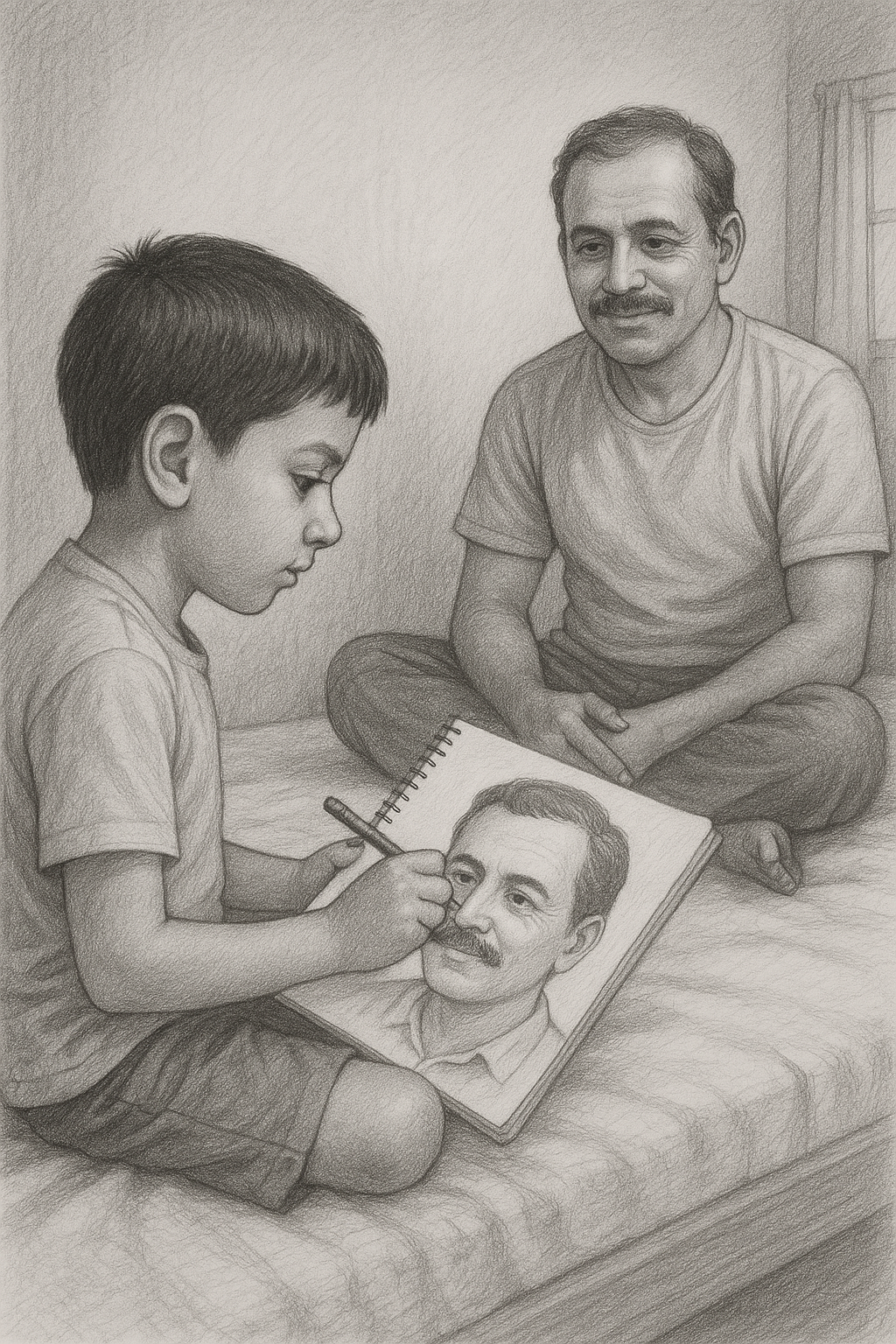बालकले बा को चित्र (The Boy Drawing His Father)
In the quiet of a sunlit room, a boy sits cross-legged on a bed, his pencil focused and steady, as he sketches his father’s face onto a blank page. In बालकले बा को चित्र, the moment is still, yet profound—a tribute rendered in graphite and gaze. The father watches gently from a few feet away, legs folded, a faint smile on his lips. He does not interrupt. He simply receives. This is not just a drawing—it is a child’s way of saying: I see you.
What This Scene Represents
This artwork honors the quiet bond between father and son—a bond not built by words, but by presence. The boy does not speak his love; he draws it. The father does not instruct; he allows. Between them is a sketchbook, but beyond them is an invisible bridge of trust, respect, and admiration.
The Emotional Layers in Every Detail
The boy’s concentration reflects reverence, not perfection. The sketch in his lap is bold, alive, and unmistakably personal. The father’s expression—soft, observant—shows pride without pridefulness. Everything about the scene speaks of still love: the unspoken affection passed between generations through small, meaningful acts.
Why This Artwork Speaks to Family & Identity
बालकले बा को चित्र reminds us that children don’t need grand lessons to learn who we are—they learn through observation. They draw us not just with pencils, but with memory, emotion, and mimicry. This is a portrait of identity being inherited in the simplest of ways: through time shared.
Where to Display It and Why
Perfect for children’s libraries, parenting exhibits, family-centered offices, or creative spaces. It also fits beautifully in homes where nostalgia, art, and storytelling are cherished. For more works celebrating intergenerational connection and quiet creativity, Browse Our Family Gallery or Read Our Reflections on Parenthood.
What This Print Whispers to the Soul
It whispers: Children don’t just learn what we say—they sketch who we are. And sometimes, their pencil captures something we didn’t even know we were offering: love, presence, and the comfort of simply being there.




